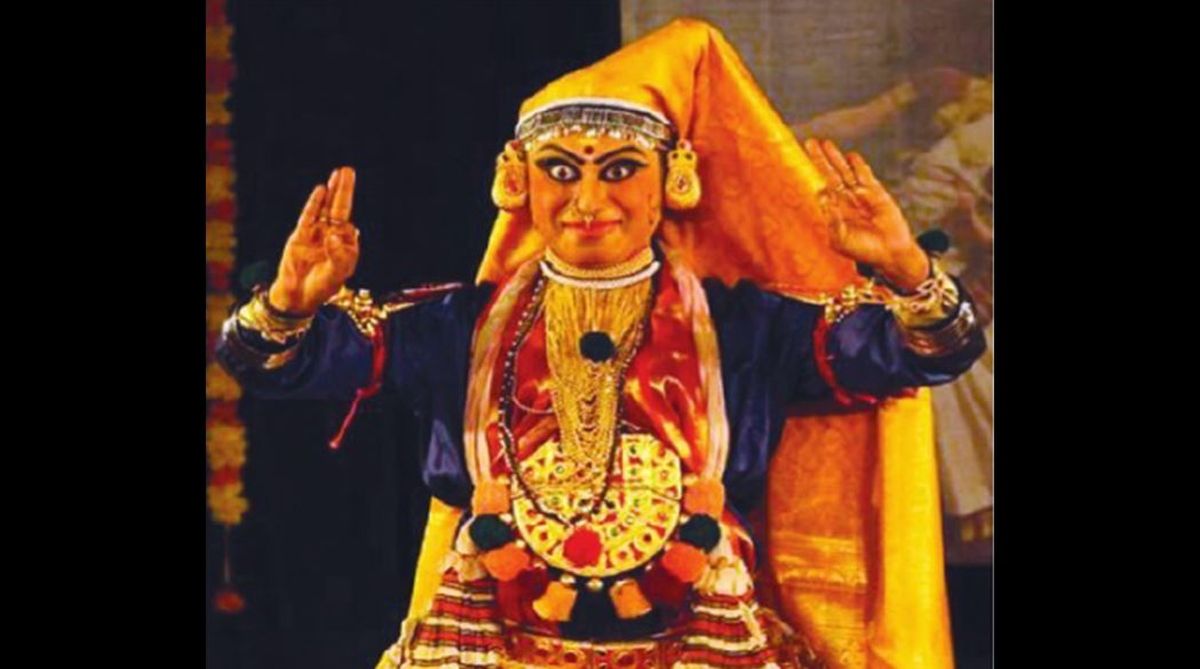Coming from a Bengali family, Prabal Gupta was born to dance. He took the less trodden path and fulfilled his ambition of becoming a solo Kathakali dancer, with no parental support towards fulfilling his passion —they wanted him to be a doctor or an engineer.
Gupta somehow managed to enroll in Kalamandalam Guru Govindan Kutty’s Kathakali classes. After graduating from Calcutta University with honours in English, he was better positioned to pursue his passion.
Recently, when he was visiting the US for performances, he was conferred the highest Civilian Award from The Council of New York, who gave him a citation as the “The Most Outstanding Citizen of New York”. And this is a rare honour —the only other performing artist to have got it is Bharatanatyam dancer Makavika Sarukkai. Excerpts from an interview with Gupta:
Advertisement
Q. How did you begin in the world of dance?
I started learning Odissi in Calcutta at an early age and later, learnt Bharatanatyam in the Kalakshetra style. However, I was always fascinated with the sounds of chenda, maddalam and edakkya —the vigourous instruments used in Kathakalidance —, their painted faces and the finely sculpted kireetam or crowns, and the lovely uduttukettu (the bulging skirt like costume). Kalamandalam Govindan Kutty knew me from childhood and agreed to take me as a student. I started learning Kathakali in 1990 and there was no looking back.
Q. How did you land up with Guru Sadanam Balakrishnan?
In 1995, the Antiquity Festival was held in Calcutta at the Victoria Memorial, organised by Sangeet Natak Akademi. My higher secondary examination was to begin in three weeks. On the first day, Kathakali was performed by my Guru Sadanam Balakrishnan among other maestros. I felt a magnetic pull towards him. Though I still continued with Kalamandalam Govindan Kutty, I had a hankering to learn from Guru Sadanam Balakrishnan. He was then director of the International Centre for Kathakali in Delhi.
I tried taking up a job in Delhi to learn from him, but I landed up in Bangalore instead with Infosys. I joined Guru Fact Padmanabhan who lived in Ernakulam and was a specialist in Streevesham of Kathakali. I would travel every weekend to learn from Padmanabhan Ashaan. I stayed in his house and learnt in the proper gurukul style. By then Sadanam Balakrishnan had relocated to Chennai to be in charge of the Kathakali department in Kalakshetra. I somehow got his number, called him and asked if he would teach me. Tears rolled down my cheeks when I met him for the first time. He took me under his wings.
Q. How helpful was Balakrishnan’s method of teaching?
The first few months under Balakrishnan Ashaanwere indeed strenuous. The Keezhupadam style of Kathakali is a highly stylised genre, quite different from the other styles of Kathakali, evolved by Padmashree Keezhupadam Kumaran Nair Ashaan. It took me months, rather years, and severe back pain to imbibe the style in my body. It was after a year that I could slowly understand what he had been trying to teach me. He is a strict disciplinarian and hard task master. I had to unlearn what I had learnt and start afresh. Presently I do the Keezhupadam style of Kathakali. Undoubtedly, the stylisation in this particular genre of Kathakali coupled with my perseverance, improved my performances.
Q. Very few students learn both Purushaveshamand Streevesham simultaneously.
Under Guru Govindan Kutty, I was learning Purushavesham-oriented padams. In Bangalore I did not know anyone who could do chutti make up. When I shifted to Padmanbhan Ashaan, I decided to perform Streevesham. I resumed performing male characters under Sadanam Balakrishnan. He has not only helped me improve in my Streevesham aspect but has also been teaching me male-oriented padams.
Q. What are some of the pieces you love?
All padams in Kathakali, taken from the brilliantly written attakathas, composed by great stalwarts, are my favourites. Urvashi from Kalakeya Vadham, Hidimbi’s padam from Baka Vadham, the padampivoting around the confabulation of Lalitha and Panchali called Nallar Kulam taken from Kirmeera Vadham, Lalitha’s padamfrom Narakasura Vadham, Devyani’s padam from Devyani Charitam, Sati from Daksha Yagam, Krishna from Kalyana Sougandhikam, Krishna and Panchali from Duryadhana Vadhamor Sairandhri’s padamfrom Keechaka Vadham, Dutan’s padamfrom Uttara Swayamvaramor Bhima’s padam, Sourya Gunamhave been my favourite pieces.
I have worked upon Shakespearean stories as well. Lady Macbeth — an adaptation of Macbeth, Cleopatra—a Kathakali adaptation of Shakespeare’s Anthony and Cleopatra, Manasa Charitam —a Kathakali adaptation of the Bengal folklore Manasa Mangal, When Parallels Meet — a love story pivoting around the relationship of Chitrangada and Arjuna and Dakshadharadwamsanam— the Manipravalam story of Dakshayagam adapted in Sanskrit. This would be a happy confluence between Kathakali and Purulia Chhau, to be staged on 17 November this year as a part of the White Field Dance and Music Conference.
Q. What are your feelings on the prestigious award you got recently in New York?
I was touring the US when it was announced from the Council of New York that I have been bestowed with one of the highest civilian awards. The “Outstanding Citizen of New York” was conferred on me by the Member Council of New York. It was unbelievable. I represented India last November and was invited by the Indian Embassy in Washington DC yet I went unnoticed. Hence this came as a big surprise. I am indebted to Guru Sadanam Balakrishnan for everything. This was due to his blessings. I am also indebted to Redbridge International Academy, which is the school I work in. My principal and the management have always supported me
Advertisement











